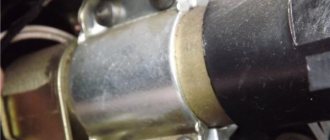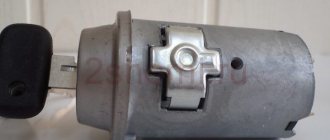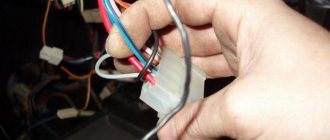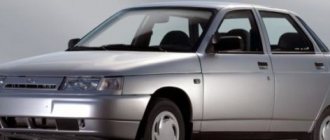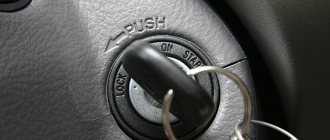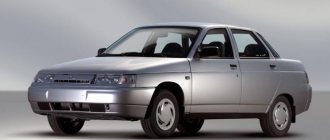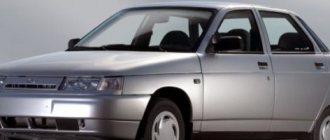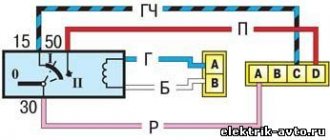Worn parts (namely pins) of the cylinder in combination with the wear of the ignition key are quite often the cause of a jammed ignition switch. If for a domestic car it is easier/cheaper to replace the ignition switch assembly, then with a foreign-made car everything is somewhat more complicated - the cost of the ignition switch is steep, and there is not much chance that the ignition switch will be available.
Buying a used lock is also not a great solution - the lock has worked for about the same amount of time as yours, and the chances that it will last much longer are not very many. Not always, but in most cases the solution to the problem is to replace the ignition switch cylinder. As a rule, the larva does the bulk of the work in the lock, and, accordingly, also wears out the fastest.
Is it necessary to remove the ignition switch to replace the cylinder? Usually, replacing the cylinder does not require dismantling the ignition switch.
However, on some car models (for example, the Mercedes family, the ignition switches of Mercedes cars have fairly good protection against hacking, there is no way to do without removing the lock) it is not possible to replace the ignition switch cylinder without dismantling the lock.
When is it necessary to replace the ignition switch cylinder?
1. Attempted theft by breaking the ignition switch.
2. Loss of all duplicate keys.
3. Failure of the contact group.
4. Due to the poor quality of the metal, grinding of the internal elements occurred, so the key does not cause the pins to move.
5. The key broke right inside the lock, and it was impossible to remove it.
6. Poor contact in the lock prevents the engine from starting normally.
Materials for replacing the ignition lock cylinder
— cylinder complete with new keys;
- thin watch screwdriver;
How to replace the ignition switch cylinder yourself?
1. Disconnect the negative cable terminal from the battery. Remove the screws connecting the steering column housings. Two of them are located near the steering wheel and two are located near the instrument panel.
2. Unscrew the screws securing the lower and upper steering column casing. Remove the covers. The ignition switch lock is accessible. In principle, the lock cylinder can be obtained already at this stage. To do this, pull out the side pin that holds it in the lock. This can be done with a thin watch screwdriver and tapping it with a small hammer. If the pin does not come out, try carefully drilling out the cylinder with a thin drill.
3. If you decide to remove the ignition switch before changing the cylinder, then to do this, first unscrew the bolts securing the ignition switch. This must be done with a hammer and chisel, since their heads are cut off. Loosen them slightly and then unscrew them with pliers. Remove the bracket and ignition switch from the steering column, disconnect the electrical connector.
4. Unscrew the self-tapping screw securing the ignition relay, remove it from under the panel and disconnect the connector. Disconnect the relay ground wire. Using a Phillips screwdriver, unscrew the self-tapping screw, press out the latch, remove the cover and contact group. So you've removed the ignition switch.
5. Remove the cylinder from the ignition switch lock as described in point 2. Replace it. Check the operation of the lock with a new cylinder by turning the ignition key. Install the ignition switch by performing all steps in reverse order. Replace the steering column. Don't forget to connect the terminal to the battery. Check the operation of the ignition switch and other electrical equipment of the vehicle.
Subscribe to our feeds on social networks such as Facebook, Vkontakte, Instagram, Twitter and Telegram: all the most interesting automotive events collected in one place.
Volkswagen Passat B3 - B4 replacing the ignition switch with your own hands
Information applicable to car repairs:
Volkswagen Passat B3 / Volkswagen Passat B3 (312) 1988 - 1994 Volkswagen Passat Variant B3 / Volkswagen Passat Variant B3 (315) 1988 - 1994
Volkswagen Passat B4 / Volkswagen Passat B4 (3A2) 1994 - 1997
Volkswagen Passat Variant B4 / Volkswagen Passat Variant B4 (3A5) 1994 - 1997
The procedure is also suitable for other cars.
From the tools we need a set of hexagons, a screwdriver head or a socket wrench (24*22), an open-end wrench of the same size, a hammer, a drill and a drill bit of about 2 mm and hands.
This is what the steering wheel looks like.
use a screwdriver to pry up and remove the signal button and disconnect the two chips from the signal terminals. (be careful not to tear it out like I did)
then unscrew the steering wheel nut with a 24mm socket and gently rock it and remove it from the steering rack splines
The steering wheel has been removed.
After this, unscrew the three screws securing the plastic casing and remove it
Then disconnect all connectors from the switch block and the connector of the contact group
switch group connector
ignition switch contact group connector.
removed ignition switch connector.
After this, remove the group of switches (windshield wipers) by unscrewing 3 screws. This is what remains.
Bushing that can be removed with a puller
Then you need to knock down the bushing. To do this I used a 22 mm wrench and a hammer. There is a protrusion on the bushing under which I inserted the key and began to knock it down with light blows of a hammer. You can, of course, use a puller, but I didn’t have one. In the photo above it has almost come off the slots.
Cardinal ways
When the key stub cannot be obtained by any of the gentle methods, radical measures have to be taken.
One of them is the extraction of the larvae.
In a cylinder lock it is located in a cylinder. If it is located in a protruding form, it should be clamped with a gas key and rolled up, and the lock should be opened with a flat screwdriver.
If the cylinder is concentrated in the closed position and is not visible, then first you need to remove the top cover. Then act in the same way as in the first case.
There is a method in which the larva is knocked out using a chisel and hammer.
Another option is to cut down the lock bolts with a regular hacksaw.
The most barbaric methods are to completely cut out the entire lock or remove the door from its hinges. Such measures are taken in extreme cases, when all others have proven ineffective or when it is urgently necessary to get into the apartment. This usually happens if there is a small child at home or the smell of gas or combustion comes from the apartment.
Volkswagen Passat ignition switch replacement
The first signs that the ignition switch is worn out as much as possible, and you need to replace its components or replace the ignition switch assembly as soon as possible:
- Key jammed.
- No reaction when turning the key (the car does not react to the movement of the key, only after two or three attempts everything becomes normal).
Required Tools
For this procedure you will need the following tools:
- Set of hexagons.
- Screwdriver Set.
- Socket wrench.
- Ratchet.
- Hammer.
- Drill.
- Rags.
Replacing the ignition switch
The procedure for replacing the ignition switch takes from one to several hours, depending on the level of training, the availability of the necessary tools and the conditions of the repair procedure.
- Using a screwdriver, remove the signal cover (tear it off carefully).
- Turn off the power to the car by removing the negative terminal from the battery.
- Disconnect the two conductors from the signal terminals. Be careful not to rip them off.
- Unscrew the steering wheel nut with a socket and then remove it.
- Remove the plastic casing. To do this, you need to unscrew the three mounting screws.
- Disconnect all connectors from the switch block.
- Disconnect the connectors from the contact group.
- Remove the ignition switch connector from the vehicle.
- Now you need to disconnect the switch group.
- Remove the bushing together with the puller.
- Knock off the bushing.
- Remove the spring after successfully removing the bushing.
- Remove the bolt that secures the ignition switch housing.
- Remove the plastic sleeve.
- Insert the key into the lock and only then completely dismantle the lock body.
- Remove all lock parts from the steering rack.
- Remove the contact group from the housing. To do this, you need to unscrew one mounting screw.
- Assess the condition of the ignition switch contact group socket.
- As a rule, a certain “cylinder” is replaced on the ignition switches. To do this, you need to press on the stopper of the larvae.
- Drill a hole in the required location.
- Use a nail or other sharp object to remove the larva from the body.
- Assess its condition in more detail
- Replace with a new one.
- Assembly is carried out in the reverse order of removal.
Egnition lock
On modern cars, it is almost impossible to completely wear out the ignition switch, but on older Passat models, a similar nuisance happens from time to time. As a rule, ignition switches die by 150 thousand km. operation of the vehicle.
Replacing the ignition switch with a new one is always problematic, since the lock may break during a crossroads between two cities. In this case, you only have to call a tow truck, and loading the car is a problem, since, usually, along with a worn ignition switch, the steering wheel is blocked.
Ignition locks are often replaced due to the loss of the key. But, in this case, it is more appropriate to restore the ignition key.
They also often replace ignition switches after their car has been stolen or robbed (there are many examples when robbers, having watched enough movies, inserted screwdrivers into the locks with the hope that the car would start and drive). After the above points, replacing the ignition switch is a necessity.
Design features, purpose and principle of operation
The ignition switch consists of two main parts - mechanical and electrical. The mechanical part includes a cylindrical lock or cylinder. It is also called the core. The mechanical part is designed not only to close the corresponding contacts, ensuring the operation of electrical appliances or starting the engine, but also to lock/unlock the steering wheel. A special rod is used as a blocker.
The electrical part is represented by a contact group. It is responsible for supplying power to the starter, which rotates the engine crankshaft and starts it. In addition, this device is also responsible for the operation of the ignition system, instrumentation and lighting. Below is the design of the ignition switch and its components.
The ignition switch of Lanos, Sens and Chance cars has four key positions. When the “LOCK” position is off, there is no power to all electrical devices (only the hazard lights and the brake lights work when the brake pedal is pressed). In the “ACC” mode, power is supplied to some interior electrical appliances (radio, instrument panel and interior lighting), as well as external lighting (side lights).
The third mode is “ON” - when it is turned on, the ignition is connected. In this mode, you can turn on the heater, low and high beam headlights, air conditioning (if equipped), wipers, etc. However, it is not recommended to do this for a long period when the engine is not running, since all of the above devices consume high current. And if you leave the car in this mode for a long period of time, the battery will quickly discharge. That is why this mode is also called working mode, and is operated when the engine is running.
This is interesting! In the third “ON” position, power is supplied to the ignition coil. The engine is ready to start, and all that remains is to rotate the crankshaft to start the engine. Moreover, you can start it not only from the starter, but also from the pusher. However, it is not recommended to start engines this way on electronically controlled vehicles.
The fourth position “START” is responsible for supplying power to the starter. In this mode, maximum current consumption from the battery occurs. However, this mode is short-term and is intended solely to start the engine. After starting the engine, the key automatically returns to the “ON” mode, which is realized using a specific design of contact disks.
Volkswagen ignition switch repair
In continuation of the series of articles on the repair of automobile ignition switches, there will be this article on the repair of the VW ignition switch, as well as on the repair and replacement of the Volkswagen cylinder. Due to the high popularity of these cars, quite often it is necessary to repair and replace cylinders and ignition switches of the entire VAG group, which in addition to VW includes AUDI, SEAT and SKODA.
Reviews about us
Hello!
Yesterday I used the service of making a set of chip keys for my Volvo XC90 from your company. I will say to the point - the craftsmen did everything very quickly, efficiently and inexpensively. Well done! Thank you for the European level of service! Artem Nagorny 04/16/14 I would like to thank the employees of your company for their work. I was convinced of their professionalism from my own experience. I ordered chip keys (I have a Suzuki MR Wagon) and was really surprised how quickly they did everything. I recommend this company to everyone. Bogdan Perezyabov 05/17/14
Thanks to the masters from Key2012! I personally was very pleased with your work, which is why I decided to write a review. The guys do a good job, they quickly made me chip keys for the Fiat Panda. I liked everything, especially the normal price. I wish you good luck in developing your company! Anatoly Gurev 07/01/14
If you want to make an order? Check the cost? Contact us by phone number 8, or leave a request on the website!
How to Remove the Ignition Lock Cylinder Passat B3
15 Jun
Repair/replacement of the ignition lock cylinder Audi 80/B3 91′
by admin · January 7, 2010
Required tool:
Removing the ignition switch.
Cylinder lock type
Another important point. There are two types of cylinders in locks:
- with a turntable - that is, there is no keyhole on the inside of the door, only a turning mechanism for closing the lock
- without spinner - with keyholes on both sides.
Repair and replacement of the ignition switch - when does this happen?
The main function of the relay is to turn on the ignition and starter. In addition, it locks the steering. The main components of the device are a housing with a lock, an anti-theft device and a contact part. Wires extend from the contact part, with the help of which the entire ignition system is turned on. If any one part fails, the entire system stops working.
In order for the ignition switch to be replaced, certain conditions must arise whose consequences will make repairs impossible or too costly. For example, if an attempt is made to steal the lock, it may suffer mechanical damage. Replacement is also carried out in case of loss of keys to the system. And finally, the relay is changed in case of serious damage in the contact group.
More often the ignition switch is repaired due to poor contacts. In order to check them, the negative terminal on the battery is disconnected (the wire is removed from the battery), and the lower casing in the steering column (part of the plastic under the steering wheel) is removed. The contacts are disconnected and checked using an ohmmeter (a device for measuring resistance). The selected contacts must have zero resistance, otherwise replacement is necessary . In case of minor damage, it is enough to change the lock cylinder (the core into which the key is directly inserted) or its contact group (the entire set of paired contacts, sometimes presented in the form of a box with terminals
Disassembling the lock and removing the cylinder
Disassembly begins with removing the contact group from the cylinder rod, which, in turn, is attached to the body with three screws. First, remove the plastic cover from above, which is secured with latches. Then, bending the two clamps, remove the contacts along with the wires.
When unscrewing the bolts securing the lock cylinder to its body, you should hold it vertically, with the keyhole facing up. Otherwise, the internal parts of the lock will spill out and it will be problematic to assemble them in the same order. When we disassemble the lock, we must pay attention that in the body there is a special groove with a return spring and a ball, which very easily jumps out and gets lost, you should pay special attention to this when you remove the lock cylinder.
When installing a new part, you need to insert the spring into the groove on the side and put everything in place by turning it, while the spring should rest on the ball in the housing. After this, you can tighten the mounting screws and install the contacts. Before tightening the screws, you must turn the lock so that it does not interfere with the subsequent installation of the steering column trim.
Thus, repair instead of a complete replacement in some cases may be justified, although it will take more time in cases where it is not possible to find spare parts for a particular car or the cost of the entire assembly is too high.
How to remove the ignition switch - step-by-step instructions.
Before repairing or replacing the ignition, it must be removed to inspect it and determine the nature of the damage. Removing the system is not particularly difficult, provided that a certain algorithm of actions is strictly followed:
After the inspection and check have been carried out, it is necessary to decide whether repairs are sufficient in the current situation or whether a complete replacement of the ignition switch is required.
If the key won't turn
In the case of the ignition switch, everything comes down to the same scheme: disassemble the lock as much as possible. Then you need to knock out the stopper pin and remove the mechanism. In extreme cases, you will have to drill it and then knock it out.
Tricky trick
Most often, the key in the ignition switch stops turning for three reasons:
- grease abrasion;
- clogging with dust (solved by washing with WD-40 or other car cleaners);
- metal fatigue.
For reference, a cylinder lock is based on a series of pins (pins), consisting of two halves and running up and down on springs. To open the lock, you need to place all the pins at a given height, that is, so that they fit exactly into the recesses of the original key.
Over time, the springs weaken and stop lifting the pin. Such a “tired” element can simply be removed from the lock - the car will start again, and with the original key, so there is no need to change all the locks in the car. If more than one pin is broken, then dismantling is only a temporary measure, because such a car will start with any third-party key.
Door locks
Very often the key does not turn in the car door because it is rusty (it was rarely used) or frozen. The first can be solved with a rust converter (it will take quite a lot of time), the second can be solved by heating.
What should you not forget when working?
When carrying out repairs, in order to change the contact part, a retaining ring is pryed into the end of the housing with an awl (holds the core of the ignition switch inside a convenient housing), after which the contact part can be removed. The new contact group is installed in such a way that the location of plugs 15 and 30 is where the locking rod is located. In this case, with their wide protrusion, the contacts must fit into an equally wide groove in the housing. All parts are installed on the car in the reverse order corresponding to their removal.
It is better to carry out repair work in a dry room, avoid direct contact with moisture on the contacts and terminals, so as not to disassemble this system again in the near future for banal cleaning of oxides.
According to the electrical diagram, a new or repaired ignition switch is installed, as well as all wires in accordance with the preliminary marking of the terminals. In order to simplify the connection of wires, their markings are transferred to the new system. Provided all installation and connection rules are followed, the new lock will be able to operate for a long time. In order to guarantee uninterrupted operation and avoid early breakdowns, it is necessary to choose a modern and high-quality model.
Use of hand tools
If one key is broken, there is usually no serious problem. In most cases, the motorist has a spare key. It’s just that you won’t be able to use it. To do this, you will first have to get rid of the debris.
Having broken the key, try to calm down, pull yourself together, and carefully study the current situation. Look into the lock itself where the key is stuck.
Consider yourself very lucky if a piece of a broken device is partially visible from the outside. That is, the metal protrudes beyond the level of the lock itself, and is not stuck deep inside.
Because the key's metal protrudes, it can be snagged with suitable tools. This is the most successful combination of circumstances, if one can say so in the current situation.
Just keep one thing in mind. Although the rod protrudes from the lock, it still sits quite tightly inside the larva. This is not felt when the key is intact, since the gripping area is quite large. The effort of a few fingers is enough to remove without problems.
Only part of the rod remains here. It is unlikely that you will be able to grab it with your fingers and pull it out. Also, try not to drive the sting even deeper into the larva with your rash actions.
To remove a broken key that is stuck in your car door, you can use:
- multitool;
- pliers;
- pliers;
- powerful tweezers;
- long-nose pliers;
- mechanical spider;
- side cutters;
- with wire cutters.
The idea here is to firmly grasp the protruding metal part of the stuck key, and then begin to gradually pull it out.
It is very important here not to rush, not to try to literally pull out the key in one movement. This way you can accidentally ruin something, break the pieces and say goodbye to the easy extraction method.


